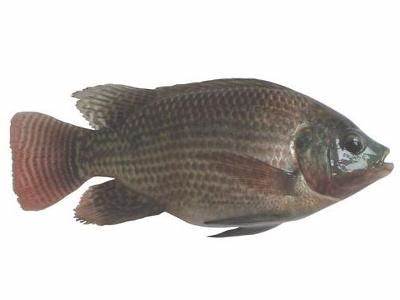|
Tilapia Fish(Oreochrosmis Niloticus)
Tilapia have been farmed for at least 4,500 years; according to legend, it’s also the fish Jesus served to the multitudes (hence its nickname, St. Peter’s fish). Tilapia is relatively new to American consumers. Ridden the wave of popularity in recent years, Tilapia exceeds Crab and Cod and becomes the 6th among of America's top ten seafoods after Shrimp, Tuna, Salmon, Pollock and catfish.
Tilapia has a sweet, mild flavor and a firm, flaky texture. It is now the sixth most popular seafood consumed in the United States after such varieties as shrimp, salmon and canned tuna. In Sushi business, Tilapia is sometime used as a substitute for Red Snapper. The flavor of true Sea Bream is beautifully sweet with a fine grain and very lean. Red Snapper has an equivalent texture, but is slightly less sweet. Modern tilapia operations have solved the muddy-taste problem by using tanks, floating net cages and raceways, feeding their fish specially formulated diets and/or restricting feeding them before harvesting to clear their digestive tracts.
Tilapia are one of aquaculture’s most adaptive species. Found in tropical and sub-tropical waters worldwide, they can be grown in fresh or brackish water and thrive in ponds, tanks and cage systems. Most tilapia in the U.S. market are one of three species: Blue (Oreochromis aureus ), Mozambique / Black (Oreochromis mossambicus) and Nile / Red (Oreochromis niloticus). A fast-growing species, tilapia can reach two pounds in approximately eight months (a two-pound fish will produce two 6-oz. fillets, depending on trim). Commercially grown tilapia are almost exclusively male. Being prolific breeders, female tilapia in the ponds/tanks will result in large populations of small fish.
Most tilapia in the U.S. market are imported from China and Latin America. In the U.S., tilapia are farm raised in closed tank systems, which are more ecological friendly.
SCIENTIFIC NAME:
MARKET NAME(S):
SIZE RANGE: YIELD:
PRODUCT FORMS: FROZEN TILAPIA WGS: whole gutted and scaled
STORAGE & HANDLING: |



